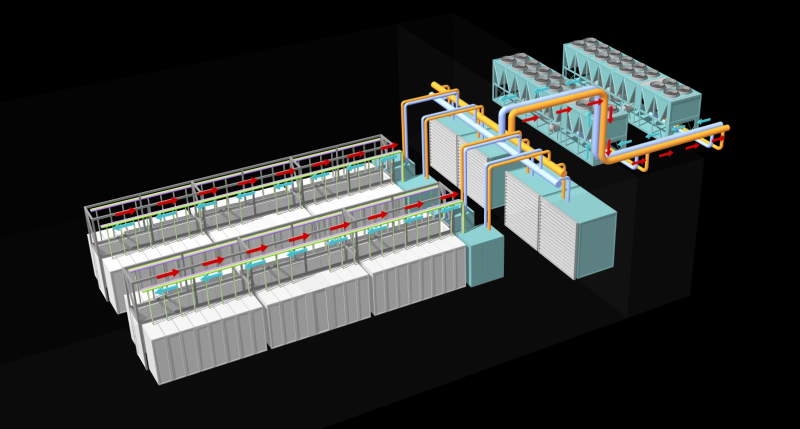Drainless data centers: new Microsoft data centers will have near-zero water consumption


Microsoft has announced a new cooling architecture for its data centers, where water circulates in a closed loop and there is no evaporation at all. All Microsoft data centers developed from August 2024 will receive new cooling systems. They are expected to be operational by the end of 2027. And for the first time, new approaches will be tested in data centers under construction in Phoenix (Arizona) and Mount Pleasant (Wisconsin) in 2026, the company’s press service reports. However, existing facilities will still use different combinations of cooling systems.
According to Microsoft, the new architecture will reduce drinking water consumption at each of the company’s data centers by more than 125 million liters per year. This figure is based on an average water use efficiency (WUE) of 0.30 l/kWh, which has improved by 39% over the past three years. And since the early 2000s, when the company began building its own data centers, WUE has decreased by 80%. This is the result of efforts to reduce the volume of wastewater, increase temperatures in the data center and increase control over equipment operation. Additionally, the company uses treated wastewater and recycled water in Texas, Washington, California and Singapore.


Image source: Microsoft
The company says the new technologies use closed liquid cooling loops—once the system is filled with water during installation, water will circulate between servers and coolers without the need for constant “topping up.” This approach is combined with direct liquid cooling, which allows the circuits to use warmer water, improving not only WUE, but PUE.
Image source: Microsoft
However, in parallel, a “nominal increase” in electricity consumption is expected for each new data center based on appropriate technologies. However, the company says it is working on other innovations to provide “more targeted cooling” and reduce energy costs. The new architecture in some cases will avoid situations where a company is forced to use air cooling or build wastewater treatment systems for its data centers.
Recent Posts
Nissan Leaf EV to Become NACS-Ported Compact Crossover in Third Generation
Nissan Leaf can rightfully be considered a long-liver of the electric car market, since the…
OpenAI expects to more than triple its revenue this year and then double it next year.
OpenAI, the market leader in generative artificial intelligence systems, remains nominally a startup, its financial…
OpenAI Decides to Hold 4o Image Generation Launch for Free Users
OpenAI has been forced to delay the release of ChatGPT's built-in image generator for free…
1440p and 240Hz for just $200: Xiaomi updates the 27-inch Redmi G27Q gaming monitor
Xiaomi continues to update its Redmi G27Q gaming monitor every year. The model was first…
Beware, Android is shutting down: OS development will cease to be public, but there is no reason to panic
Android device makers can significantly customize the look and feel of the operating system, but…
Fake GeForce RTX 4090s with RTX 3090 chips have started popping up in China — craftsmen are even changing the GPU markings
In China, scammers have started selling GeForce RTX 3090 graphics cards, passing them off as…